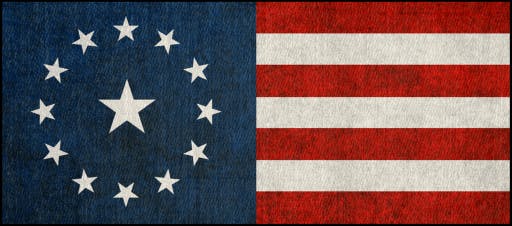To truly understand the power structure that controls the United States and much of the world, one must go back to the origins of the Federal Reserve and examine the circumstances surrounding its creation. Who created it, and why? The Federal Reserve was established in 1913 through the Federal Reserve Act, but its conception began years earlier in secrecy. A secret meeting took place in 1910 on Jekyll Island, a private retreat in Georgia owned by some of the wealthiest banking elites in the world. Present at this meeting were representatives from the most powerful financial families of the time, including the Rockefellers, Morgans, Warburgs, and Rothschilds. These men devised a plan to create a central banking system that would give them control over the U.S. monetary supply, hidden behind the illusion of government oversight. They knew the American people would never willingly accept such a system if they understood what it really was, so they packaged it as a means of economic stability and prosperity. The reality, however, was far from it. The Federal Reserve was designed not to serve the public, but to protect the interests of those who created it—allowing them to control inflation, manipulate markets, and create endless cycles of boom and bust that transfer wealth from the people to the banking elite.
Now, consider another historical event that happened just two years later—the sinking of the Titanic in 1912. What does a maritime disaster have to do with the Federal Reserve? Several of the wealthiest and most influential opponents of the Federal Reserve system were aboard that ship, including John Jacob Astor IV, Benjamin Guggenheim, and Isidor Straus. These men were known to oppose the creation of a centralized banking system in America. Had they survived, they would have used their financial and political influence to fight against the Federal Reserve Act, potentially preventing its passage. Was the sinking of the Titanic a tragic accident, or was it something more sinister? It is worth noting that J.P. Morgan, one of the key architects of the Federal Reserve and owner of the White Star Line (the company that built the Titanic), had originally planned to sail on the Titanic but mysteriously canceled his trip at the last minute. While mainstream history dismisses any connection between the two events, the timing is undeniably suspicious. The loss of those powerful men removed significant opposition to the central banking system, clearing the way for the passage of the Federal Reserve Act in 1913.
Fast forward to 1933, and another massive power shift took place—President Franklin D. Roosevelt (FDR) signs Executive Order 6102, requiring Americans to turn in their gold to the government. Why would a president force citizens to surrender their gold under threat of imprisonment? The answer lies in the Federal Reserve’s need for complete control over the U.S. economy. Before 1933, the dollar was backed by gold, meaning the government couldn’t simply print unlimited amounts of money without having the gold to back it up. This restriction limited the Federal Reserve’s ability to manipulate the economy to its own benefit. By confiscating gold from the American people and replacing it with paper currency, the government and the Federal Reserve gained full control over the monetary system. Citizens were given paper money in exchange for their gold, but within a few years, the price of gold was artificially inflated, effectively stealing wealth from those who had been forced to turn it in. This move further entrenched the power of the banking elite, ensuring that the people had no real control over their own wealth.
This was only the beginning. Nearly four decades later, in 1971, President Richard Nixon took another massive step in the Federal Reserve’s favor by ending the gold standard entirely. With Executive Order 11615, Nixon declared that U.S. dollars would no longer be convertible to gold. This marked the final step in fully detaching the dollar from any tangible asset, giving the Federal Reserve the ability to print money without restriction. No longer was money tied to a finite resource; instead, the U.S. economy became reliant on fiat currency—money that only has value because the government says it does. This allowed the Federal Reserve to create money out of thin air, leading to massive inflation, national debt, and economic instability. Since the end of the gold standard, the U.S. national debt has skyrocketed from under $400 billion in 1971 to over $34 trillion today. The Federal Reserve's unchecked ability to print money has devalued the dollar, stolen purchasing power from the American people, and created a cycle where economic crises always benefit the elite while the average citizen suffers.
These events are not coincidences—they are part of a long-term plan by the banking elite to centralize control over money and power. Every major economic event tied to the Federal Reserve’s history has been designed to increase the wealth and influence of the financial aristocracy at the expense of the people. The creation of the Federal Reserve in 1913 was a turning point, stripping Americans of true economic freedom. The forced confiscation of gold in 1933 was a direct assault on personal wealth and financial independence. The abandonment of the gold standard in 1971 was the final step in ensuring that money could be manipulated at will, without any real backing. Every time the American people have been told these moves were for their benefit, they were in reality designed to consolidate power in the hands of a few.
So, what can be done? The first step is awareness. Understanding the history and true nature of the Federal Reserve is critical to breaking free from its grip. People must demand transparency, push for a full audit of the Federal Reserve, and call for a return to sound money policies that protect individual wealth rather than serve the interests of an elite banking cartel. The warnings from history are clear: every time control over money is centralized, economic freedom is lost. The question is whether Americans will wake up in time to reclaim their financial independence or remain trapped in a system designed to enslave them. The choice is ours, but time is running out.
Qx




